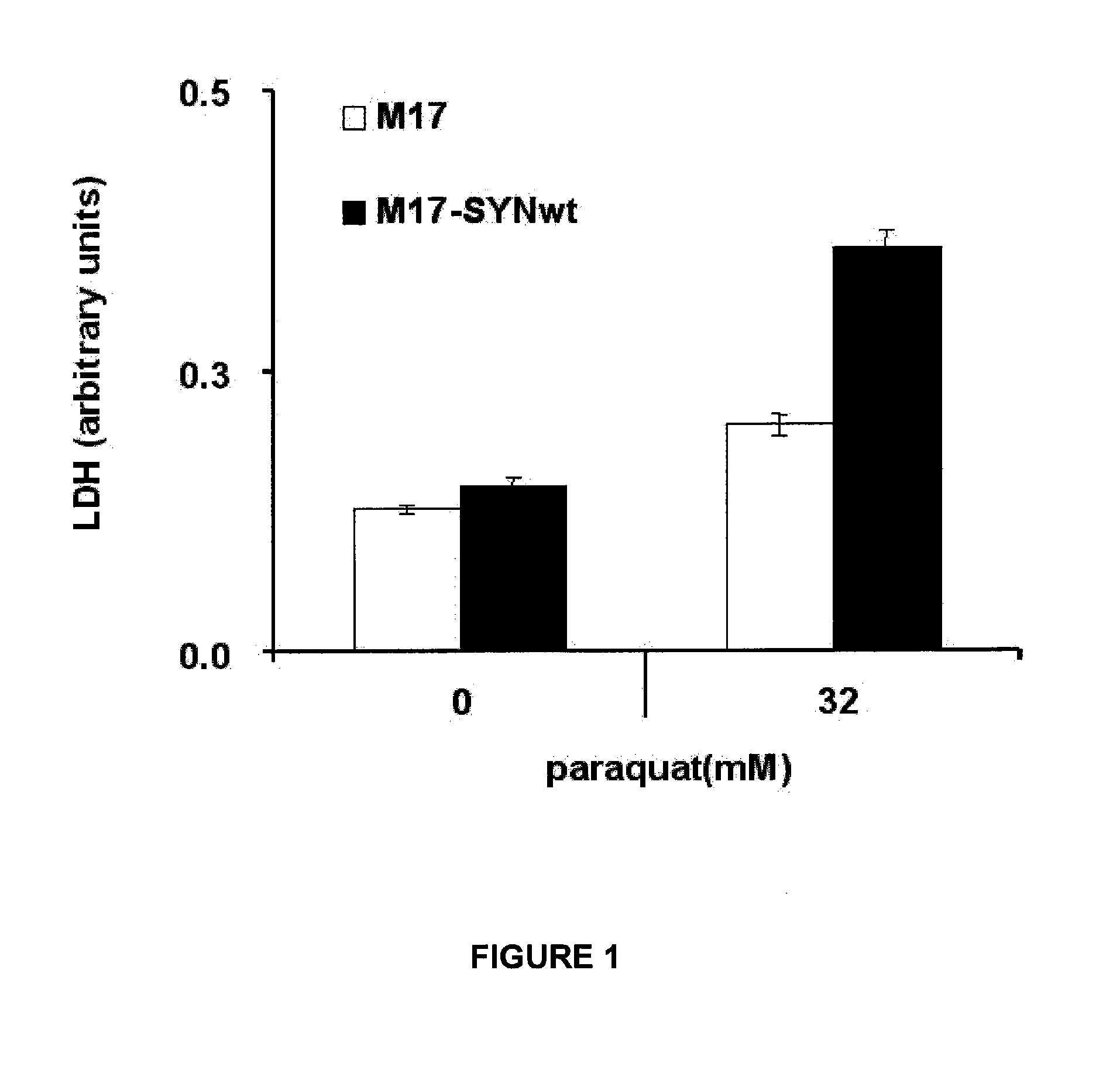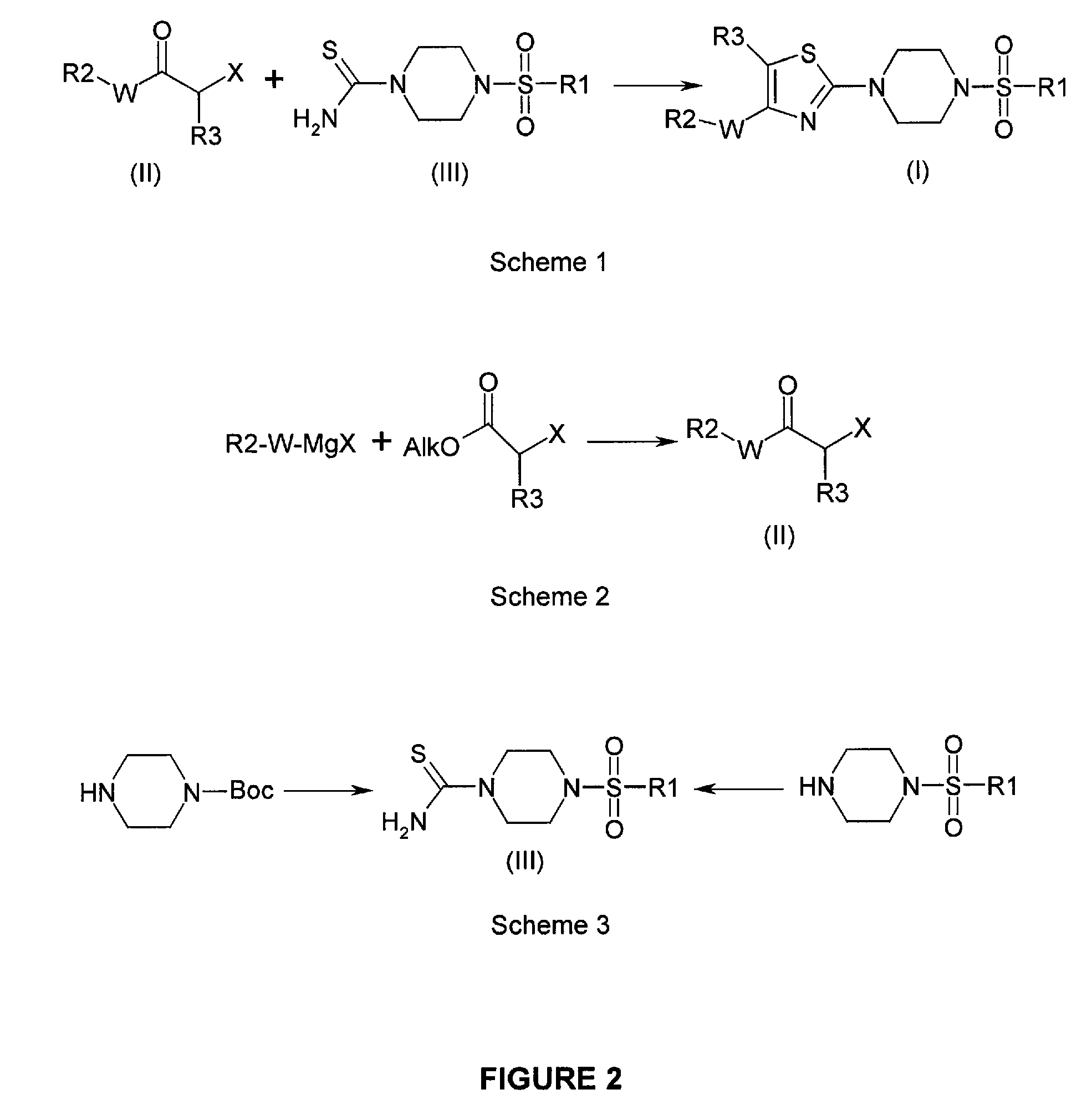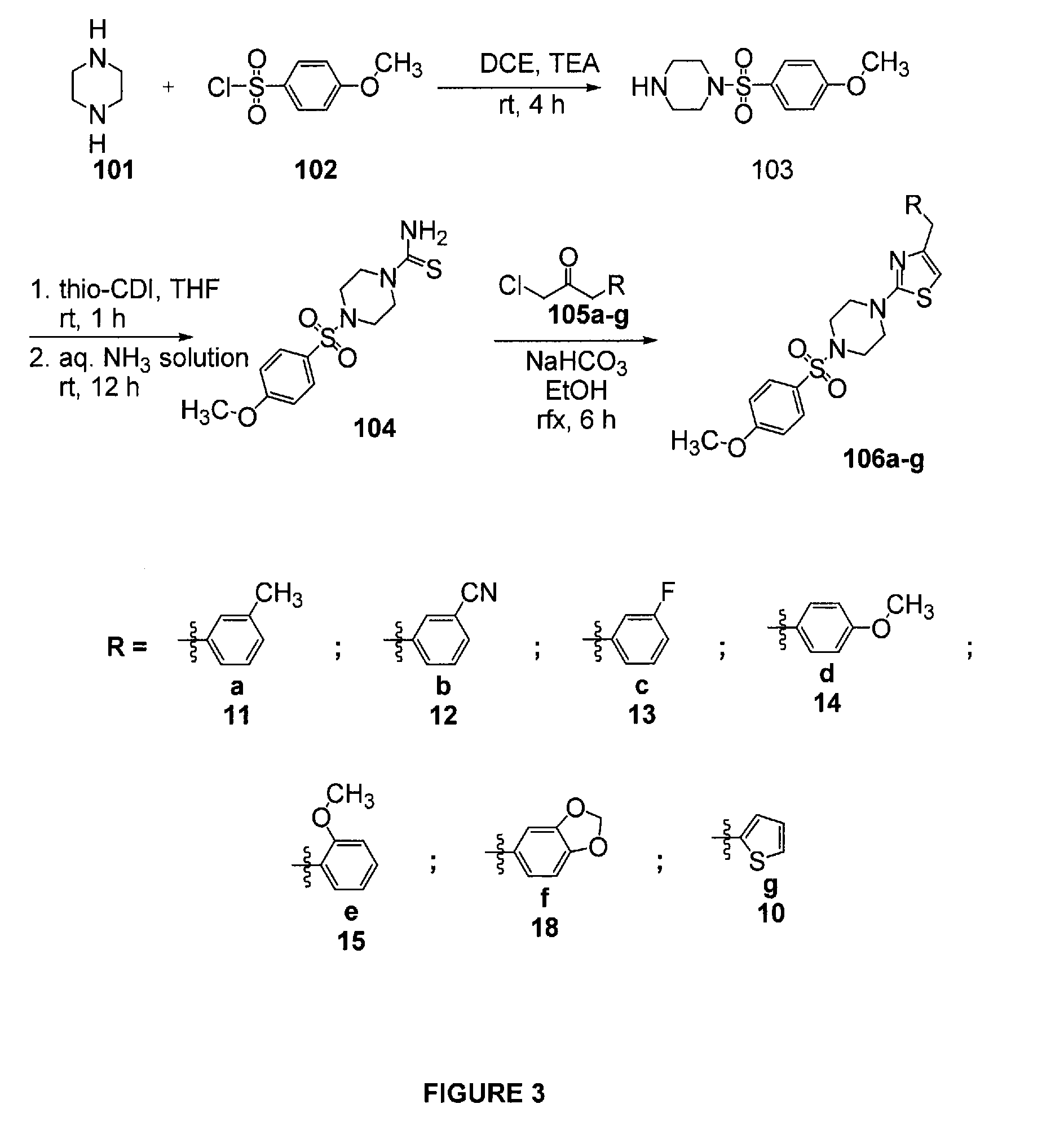N-sulfonyl thiazolylpiperazine derivatives and related n-sulfonyl heterocyclic derivatives for the treatment of neuro degenerative diseases
a technology of n-sulfonyl thiazolylpiperazine and derivatives, which is applied in the field of n-sulfonyl heterocyclic compounds, can solve the problems of cognitive and/or motor decline, the inability to inhibit the formation of insoluble aggregates, and the toxicity of soluble protofibrillar intermediates of the aggregation process. the therapeutic attempt may therefore be conceptually wrong
- Summary
- Abstract
- Description
- Claims
- Application Information
AI Technical Summary
Problems solved by technology
Method used
Image
Examples
example 1
Construction of an α-synuclein Over-Expressing Cell Line
[0124]An α-synuclein expression plasmid was constructed by sub-cloning the NcoI / XhoI fragment from 212T-SYN(WT) (Griffioen et al., Biochem Biophys Acta (2006) 1762(3):312-318) containing the cDNA of human wild type α-synuclein correspondingly into a standard mammalian expression vector pcDNA3.1 resulting in plasmid pcDNA3.1-SYNwt. Plasmid pcDNA3.1 and pcDNA3.1-SYNwt were transfected to human neuroblastoma cells (ATCC No. CRL-2267) and independent clonal lines with the plasmids stably integrated into the genome were selected. These resulted in cell lines named M17 (transfected with pcDNA3.1) and M17-SYNwt (transfected with pcDNA3.1-SYNwt). Over-expression of α-synuclein in M17-SYNwt cell lines was confirmed by Western analysis.
example 2
Use of α-Synuclein Expressing Cells as a Model for Neuronal Degradation
[0125]Due to the high levels of α-synuclein M17-SYNwt cells are exquisitely sensitivity to paraquat, a well-known risk factor of synuclein-dependent neuronal degeneration. In degenerated or dead cells lactate dehydrogenase (LDH) is leaked out of the cells into the extracellular environment due to a loss of plasma-membrane integrity. This principle was used to determine cytotoxicity by quantifying the level of leaked LDH into the growth medium.
[0126]The detailed method for determining α-synuclein cytotoxicity was as follows: From appropriate precultures of M17 and M17-SYN cells were seeded at 50000 cells / cm2 in Optimem Reduced Serum without phenol red (InVitrogen, Cat. 31985-047) supplemented with 5% fetal calf serum, 1 mM sodium pyruvate, 1×non-essential amino acids, 500 μg / ml G418 0.5×antibiotic / antimycotic. After 3 hours of incubation at 37° C. / 5% CO2 paraquat was added to the cells (final concentration of 32 m...
example 3
Use of the α-Synuclein Expressing Cells in the Screening Compounds
[0128]This α-synuclein expressing neuroblastoma cells made it possible to assess the ability of novel compounds to counteract α-synuclein cytotoxicity. Active inhibitors of α-synuclein cytotoxicity were found to provoke a decrease of LDH leakage in paraquat-treated M17-SYNwt cells. Since this method monitors leaked LDH from degenerated or dead cells only non-toxic compounds will be identified as active inhibitors of α-synuclein-mediated cytotoxicity. Lack of toxicity is an important characteristic for compounds to be used as a medicament to patients in need. A compound was considered to be active in this test when it inhibits α-synuclein cytotoxicity by more than 25% relative to untreated M17-SYNwt cells at a concentration of 20 pg / mL or lower. In the experiments, the control group consisted of M17-SYNwt cells treated with DMSO, the untreated paraquat group consisted of M17-SYNwt cells treated with paraquat and DMSO, ...
PUM
| Property | Measurement | Unit |
|---|---|---|
| Fraction | aaaaa | aaaaa |
| Volume | aaaaa | aaaaa |
| Molar density | aaaaa | aaaaa |
Abstract
Description
Claims
Application Information
 Login to View More
Login to View More - R&D
- Intellectual Property
- Life Sciences
- Materials
- Tech Scout
- Unparalleled Data Quality
- Higher Quality Content
- 60% Fewer Hallucinations
Browse by: Latest US Patents, China's latest patents, Technical Efficacy Thesaurus, Application Domain, Technology Topic, Popular Technical Reports.
© 2025 PatSnap. All rights reserved.Legal|Privacy policy|Modern Slavery Act Transparency Statement|Sitemap|About US| Contact US: help@patsnap.com



